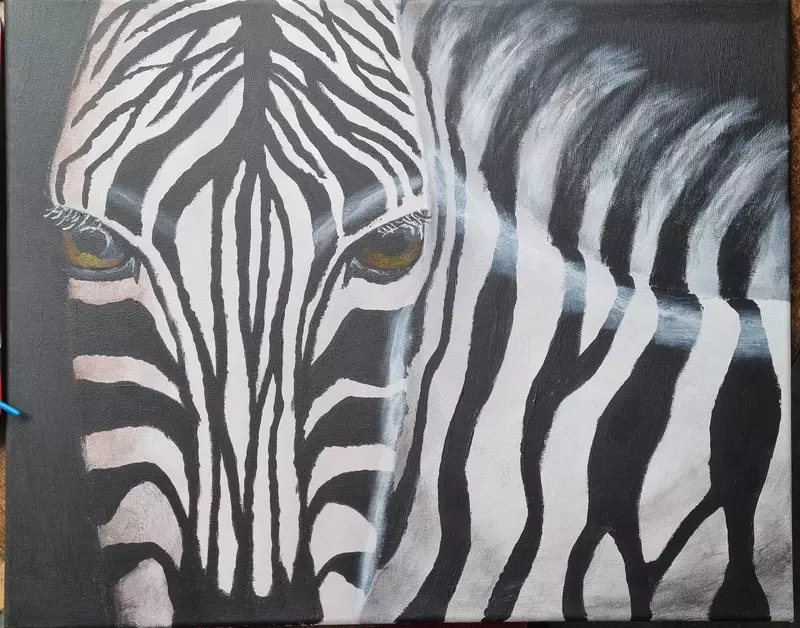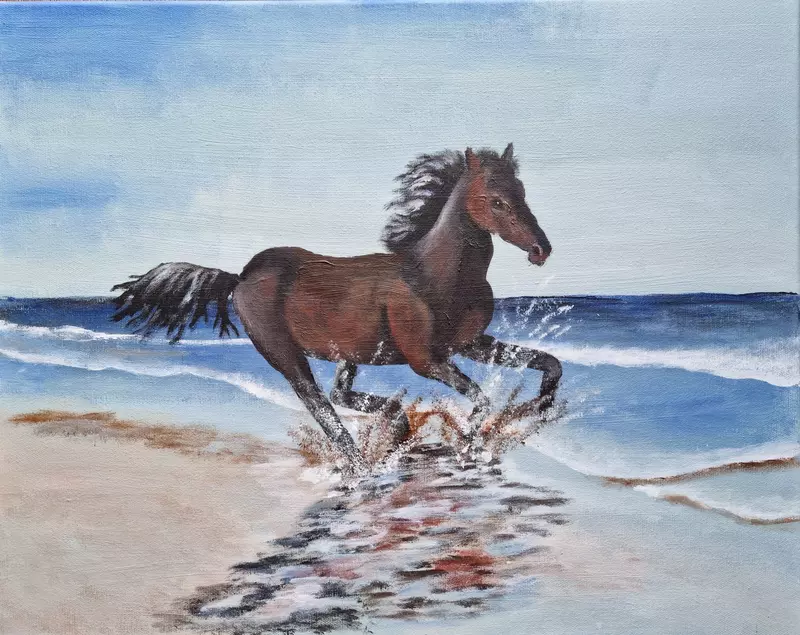Painting and Parkinson's - Howard's story
Howard was diagnosed with Parkinson’s 2 years ago, aged 43. Stepping back from his career, he's discovered a love for painting. “I’ve never been creative,” he says, “But Parkinson’s means you can still do stuff - and some things you never thought you could do.”
“I used to drink vast quantities of coffee and was under a lot of pressure at work,” concedes Howard. So when he noticed a twitch in his left hand, he initially blamed his lifestyle.
“But it got progressively worse very quickly and when I developed a tremor in my leg, I knew I needed to see my GP.”
4 months later, a specialist diagnosed Howard with Parkinson’s. At the time, he was the managing director of a small regeneration company. He was working 80-hour weeks and negotiating multi-million pound contracts.
But the side effects of the dopamine-agonist medication that Howard started taking to manage his Parkinson’s quickly proved a challenge.
“I’d read the patient information that came with the drugs and decided the side effects wouldn’t affect me.” Howard recalls wryly. “Then of course I got all the common ones!”
Howard was particularly affected by drowsiness, so he started organising his day accordingly. “I would start work at 5am and get as much done in the morning as I could before I had to take my medication at lunchtime.
"I could do about another hour before I would be zonked. I started working on weekends to get my work done.”
I like patterns and I’m good at spotting them,” says Howard. “But there are no patterns with Parkinson’s and that variability is hard to live with.
Early retirement
Eventually, Howard referred himself for a fitness to work assessment. “I actually went along to ask when the side effects would wear off,” explains Howard, but he wasn’t expecting the “brutal” experience it turned out to be.
The GP he saw told Howard that the way he was working was not sustainable. “He said there are two camps of people - those who carry on regardless and those who don’t. The first group mostly crashes and burns, but the second can be productive and healthy. He said it was entirely up to me which camp I picked.
“It was harsh, but I think I needed it,” Howard admits. “Until that point I saw Parkinson’s as like the flu - I thought I’d get better.”
By the end of the assessment, the GP told Howard he could recommend he be retired on medical grounds. Although it wasn’t an easy choice, Howard agreed. “I knew I was struggling,” he admits.

Learning to live
Howard acknowledges he’s still learning to live with Parkinson’s, 2 years on.
“I like patterns and I’m good at spotting them,” says Howard. “But there are no patterns with Parkinson’s and that variability is hard to live with.
“My friends like to see me being positive. But it’s important to be realistic - there are ‘black dog’ days. Sometimes I can spend half an hour trying to button a shirt.”
Despite this, Howard does his best not to get frustrated when things go wrong. “One morning I woke up and I felt marvellous. I almost forgot about Parkinson’s completely. I went downstairs and as I was pouring a bowl of cereal my tremor came back on very suddenly. Cereal went everywhere,” he remembers. “I finished pouring the bowl, crunched across the cereal on the floor and ate my breakfast at the table.” Clearing up would have to wait.
“It’s helpful to remember that it’s 1 day, the next day will be different. That’s a mantra I learnt early on and does get me through. And if you think about what you’ve lost, you won’t think about what you’ve gained.”
...painting gives me a sense of striving for something...I do become very incredibly focused on technique and can lose a couple of hours very quickly. It teaches me patience and a sense of calm.
The Parkinson's Painter
One of the things that Parkinson’s has given Howard is an unexpected new passion - painting.
“During my fitness to work assessment, the GP told me it’s not over and that I could try new things or start a new hobby,” Howard remembers. “My response was, ‘Well I’m not going to start bloody painting am I?’”
A few months later, as Howard was slowly adjusting to the extra time he had on his hands, he decided he would give painting a go after all - “As a bit of a 2-fingers up to Parkinson,” he laughs.
I began following the instructions in a book and painted a tree,” Howard remembers. “It looked like a tree so I thought that was a good start!”




He now paints regularly, following tutorial videos on YouTube for inspiration. Amongst his friends, he’s become known as ‘The Parkinson’s Painter’. He’s even created a website to share his painting under his new nickname.
For a left-hander whose main Parkinson’s symptom is a left-hand tremor, Howard has had to learn to adapt. But there remains a sense of achievement when he looks at what he’s created.
“If I’m having the bad shakes, I don’t paint because it will be a mess. But painting gives me a sense of striving for something. When I can paint something almost entirely with my left hand, it’s moments like that I live for.
“When I paint I don’t forget I’ve got Parkinson’s - you can’t. But I do become very incredibly focused on technique and can lose a couple of hours very quickly. It teaches me patience and a sense of calm.
“People are slightly surprised by my work. But it challenges people's perceptions of Parkinson’s - and I like that.”

